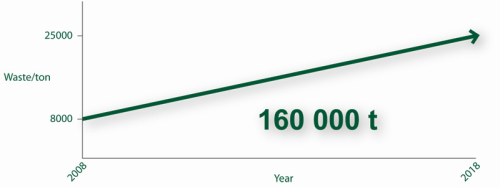
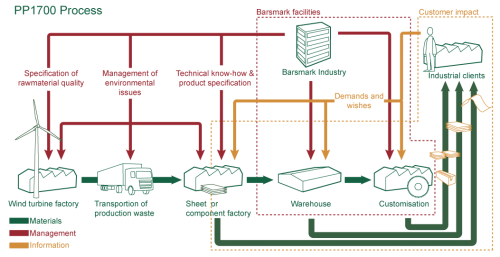
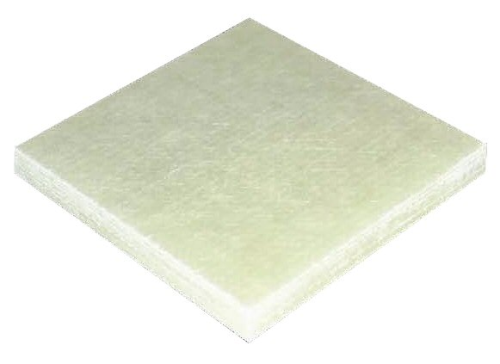
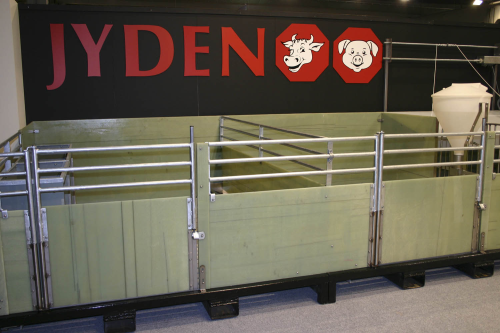
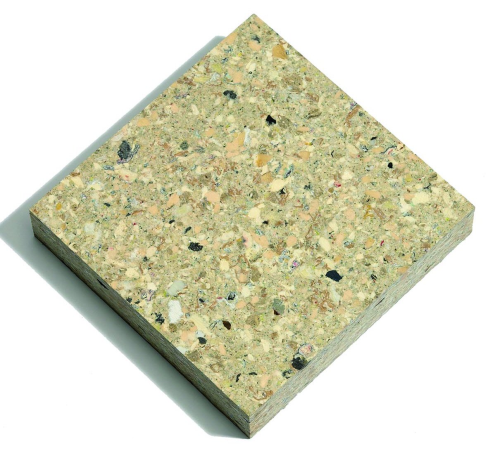
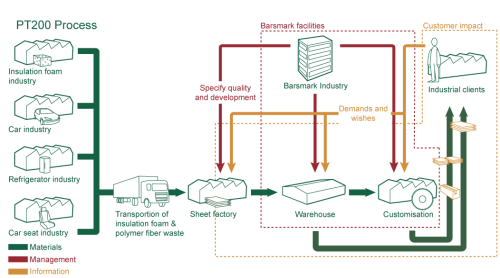
Today, many different types of industry are finding it increasingly difficult to despose of production waste and waste materials. Manufacturers are facing an ever-increasing demand from both customers and government officials to provide alternatives to landfilling or incinerating these materials. In recent years, national governments and the European Union (EU) have set out ambitious targets that require manufacturers to work towards a much higher level of recycling and to keep waste to an absolute minimum.
The Danish government had, for instance, set a target that by 2008 Danish industrial manufacturers should recycle at least 65% of their waste and surplus material, and the amount landfilled should not exceed 15%. Manufacturers, however, did not even come close to meeting these targets.
The Danish example is similar to developments in most other European countries, so it appears that there is a need for a different concept to speed up the process of recycling surplus and waste material. One way would be to impose financial sanctions on the industrial manufacturers which are not doing enough to meet the new requirements, but it is questionable whether or not these sanctions would have the desired effect. During the current economic downturn, it is probably best to avoid burdening the finances of manufacturers, if there are other options available.
The problem, however, lies not only with the industrial manufacturers. When these companies are unable to use their waste material in their normal production process, then other companies are needed that have a fresh perspective on the potential uses of the waste material. It appears to be impossible to make the industrial manufacturers themselves find a complete solution for recycling their waste material, and perhaps, instead of punishing them, the resources would be better spent at developing and supporting companies that have new ideas of reusing this waste.
Upcycling
For a number of years, the Industry department at Danish company Barsmark AS has been developing, producing and selling products made from recycled production waste, thus helping many industrial manufacturers with their waste problem.
After having worked with these types of products for a number of years, Barsmark has decided to focus on these types of product in the future. These are examples of an actual recycling, where the properties of the material or product are maintained, in contrast to a ’downcycling,’ where the properties of the product are degraded. In fact, in Barsmark’s process some of the properties in the recycled product are actually improved when compared to the original waste material – so-called ’upcycling’ of the material.
Last year, Barsmark and the company’s production partner converted more than 8000 tonnes of recycled material into finished components with some unique properties. According to Barsmark’s CEO, Paul-Erik Andersen, this is, however, only the beginning.
”By 2018, it is our goal to convert 25 000 tons of production waste into finished components for our customers,” he says. ”From now and until 2018, we will have recycled more than 165 000 tons of material [see graph], which otherwise would have been landfilled or incinerated. To be able to obtain and use such a large amount of material, we are already in the initial stages of establishing new co-operations with industrial manufacturers with usable surplus material, as well as new production partners in order to obtain the necessary production capacity.”
The two products in Barsmark Industry’s current product range are examples of the type of products that the company will focus on in the future.
PP-1700 is a sheet made from glass fibre mixed with epoxy made from waste material from the wind turbine blade industry. The material used for the production of the sheets is tested and evaluated to make sure that the PP-1700 is a homogenous sheet. The sheet has a high strength-to-weight ratio as the material is used for manufacturing blades for wind turbines. The sheet is also corrosion-resistant, which makes it suitable for many different applications.
Today, the PP-1700 sheet is primarily used as partition walls in pig sties, but it is also used as insert profiles in refrigerated trailers or for the strengthening of sandwich panels. PP-1700 is ideal for partition walls in pig sties because it fulfils almost every requirement that manufacturers of stable equipment and pig farmers have. The sheet is relatively rigid, has high yield strength, and can be cleaned with high pressure cleaners without damage. These qualities are extremely important when working with animals that weigh as much as 500 kg and that can really test the durability of the product.
The second product, PT-200, is made from waste polyurethane foam used, for example, as insulation material for refrigerators or polyester felt for car ceilings. As the foam originates from many different types of industry, it can contain trace amounts of other materials such as glass fibre or aluminium. This waste foam is converted into sheets by granulating the foam that is then pressed into a sheet. The sheet has the appearance of a standard chip board, but is 100% moisture-resistant. Another benefit of this process is that the material wasted is kept at an absolute minimum, as any excess material is gathered and reused for producing new sheets. Similarly, old, used sheets and components can be recycled after a granulation process.
This material has been used in the transport industry. Some of Barsmark’s customers have replaced the wooden components in their refrigerated trailers with components made from PT-200 sheet, thus avoiding that their trailers will gain weight by absorbing water in the structure. Also, unlike wood, expansion of the component and formation of mould in this humid environment are no longer a concern. Barsmark customises the components in its production facilities and they are delivered ready-to-use in the refrigerated trailers. Other applications for PT-200 include: a core material in bathroom furniture; a core material in laboratory walls; and as insert profiles in glass and aluminium facades.
These applications are characterised by a number of requirements: moisture resistance; resistance against the formation of mould and rot; stability of shape when exposed to moisture; low weight (approximately two thirds that of MDF); and good insulating properties with a high level of screw extraction force. As it is possible to recycle old PT-200 sheets and components, there is also a high level of sustainability in the product.
Customised solutions
Barsmark Industry works with potential new customers to finding solutions for their specific needs. A flexible manufacturing process allows for customising the sheets as needed.
”As long as we have been producing and selling PT-200 and PP-1700, we have experienced an ever-increasing interest for the products from both existing and new clients,” says Paul-Erik Andersen. ”With the increased possibilities for product development and customised solutions, we feel quite certain that this development will continue.”
”So far we have primarily been using the PP-1700 as sheets, but we hope that through our increased focus we can develop this product further,” he continues. ”We have a lot of ideas for new areas of application, as soon as we have a new production set-up established that will allow us to produce, for example, three-dimensional objects from the material. It is an area that we will put a lot of resources into during this year, so hopefully we will have a solution for this in the foreseeable future.”
|
Barsmark AS was established in 1999 as a consulting engineering company for the transport industry. The focus of the company gradually changed from finding problems in clients’ constructions to supplying customised components that could solve these problems instead. Today, the consulting engineering is gone and instead Barsmark specialises in supplying sheets and panels within the company’s three departments – Barsmark Industry, Barsmark Facade and Barsmark Interior. |
As well as continuing to develop the existing products in order to optimise their existing applications as well as find new areas of application, Barsmark expects that within a few years it will be able to add new products to its portfolio. For instance, this year, the company expects to add an extremely lightweight foam glass product to its product range. This new sheet is made from 100% recycled glass and is non-combustible, moisture-resistant and is available in a large format of 5 x 3 m. Also, the first R&D projects are in the initial stages, and the company is looking to recycle other types of industrial waste and develop new products from this waste.
”We feel quite confident that the decision to focus on recycled materials in the future is the right move for us,” concludes Andersen. ”Our employees supported the decision unanimously. In recent years, we have grown in both expertise and experience within recycling surplus materials, so we believe that we are ready to deal exclusively with this type of product.”






